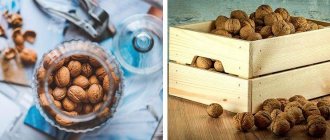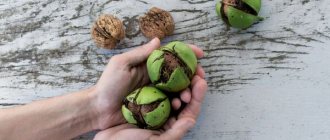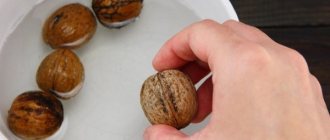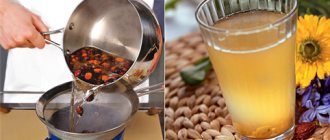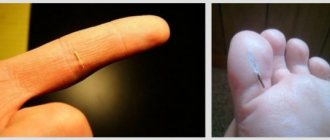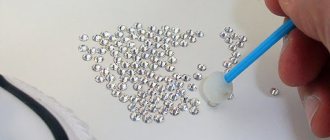When buying nuts in stores, many people wonder how the process of cleaning the nut kernels from the shell was carried out. AiF.ru explains in infographics how nuts are cleaned on an industrial scale.
Shelling is a labor-intensive step in the nut processing process. In the old days, this was done only manually using wooden tools, but nowadays there is special equipment that allows you to peel nuts from the shell in large quantities mechanically, rather than manually.
The only disadvantage of this method is that metal parts can damage the integrity of the grains and thereby significantly reduce their quality. In addition, nut kernels when in contact with metal lose their nutritional value.
AiF infographics
Techniques for harvesting, cleaning, drying nuts
The fruits of some varieties and forms fall to the ground themselves as they ripen; they only need to be collected in time. Fruits that do not fall off are removed manually from low trees and the lower branches of tall trees. To remove nuts from the upper tiers of large trees, shake the tree or individual branches with your hands or using a long pole with a hook at the end. They also use fruit pickers on long sticks of various designs. In production conditions, when harvesting nuts, a mechanism is used - vibrators. Ripe nuts are not all easily freed from the green, fleshy pericarp. In some genotypes, the pericarp cracks while still on the tree, and the nut falls out already peeled; in others, the fruit flies out when it falls; in others, it is already on the ground. But there are specimens in which it is difficult to remove the nut from the pericarp. In all cases, after falling, the fruits are collected and, in order to preserve the light kernel and shell, they are immediately cleared of the pericarp, since with it they heat up faster and stronger and retain heat inside longer. If the fruits of a nut lie on the ground for a long time, the pericarp rots, softens, the shell and kernel darken and become unsuitable for consumption. After cleaning, it is best to wash the nut fruits and bleach them either in highly salted water or in other solutions. There are many recipes for bleaching nuts. We present the simplest ones.
Dissolve in 10 liters of water: 1) salt - 5 kg; 2) bleach - 800 g; 3) baking soda (sodium bicarbonate) - 2.5 kg and bleach - 700 g; 4) sulfuric acid - 250 g, etc. It is more convenient to immerse the nuts in the solution in wooden baskets for a few seconds or 1-2 minutes, and then several times in clean water for rinsing. After this, the nut shells acquire clean, light, straw, dun, amber and other colors inherent to them. The most valuable nuts have a light-colored kernel. How to save it? Usually, when harvesting fruits at an air temperature in the sun of 25-30 ° C, the wet kernel dries normally and retains a good light color. If the air temperature in the sun rises from 32 to 36 ° C, a small part of the nuts lying on the ground begins to darken. When the air temperature rises above 36 °C (this applies to the more southern regions of the country), the temperature of the kernels of unshelled nuts exposed to the sun rises to 45 °C, the temperature of the kernels of peeled nuts is 7-10 °C lower.
In the first option, the nut kernels begin to darken after three hours. During the day, the number of darkened kernels increases to 10%. Untimely measures taken lead to a further decrease in the quality of the kernel. For example, at an air temperature of 37-38 ° C, the temperature of the kernels of unshelled nuts (increasing to 47-50 ° C) practically exceeds the critical limit beyond which rapid and massive darkening of the kernels begins. This means that the rate of deterioration in kernel quality is directly dependent on the increase in air temperature and humidity of the nuts.
So, if nuts collected and not peeled from the pericarp are piled up, then at an air temperature of 18-20°C, after a few days inside the heap, where the humidity of the nuts is 30-40%, the temperature begins to quickly rise to 30°C, increasing by 2-3 Once the fruit breathes, rotting of the pericarp begins. Under such conditions, part of the nut seeds (during the ripening period) often germinates and the root appears outward. If the nuts continue to remain in the heap, where the temperature continues to rise, then the processes of decomposition of organic matter intensify, the nut kernels darken, and the entire mass rots. When placing nuts in the shade, the temperature of the kernels after some time drops sharply by 16-19 °C. At the same time, changes in the color of the kernel are inhibited, and the loss of its quality is reduced. The temperature of nut kernels in the shade (both on a tree and on the ground) is always 8-10 °C lower than the temperature of nut kernels in the sun. The temperature of nut fruits growing on a tree practically does not increase. This is explained by the fact that they receive continuous water from the root system of the plant. Thanks to this, they do not overheat in the sun. Once the fruit is picked, the transpiration current stops, and the temperature of the nuts exposed to the sun quickly rises, and the quality of the kernel deteriorates. Therefore, if they do not have time to remove, peel and dry ripe nuts in time, it is better for them to remain on the tree.
The ratio of water and dry matter in nut fruits during their ripeness is subject to strong fluctuations. Thus, in freshly picked fruits the water content is overwhelmingly 20-40%. However, it should be noted that the value of this figure mainly depends on the collection period. It has been experimentally proven that the later the nut fruits are removed from the tree after they ripen, the less moisture they contain, and vice versa, at the beginning of ripening the nuts have much more moisture - 45-55%.
It is best to dry wet nuts in one layer (but no more than two) on wire mesh, where the water quickly drains, they are chapped, their shell dries instantly, and then the kernel is gradually dehydrated. As a last resort, the nuts are laid out on racks with holes, mats, straw or other material that allows water to pass through.
Polyethylene film and other impermeable materials are completely unsuitable for laying out during drying - water flowing from the nuts stagnates on them, after which stains remain on the shell, and the kernel often deteriorates.
Dry nuts in the sun at a temperature not exceeding 30 ° C, or in warm sunny weather outdoors in the shade under a canopy, in a greenhouse or in special dryers - preferably in a draft. It is necessary to dry nuts quickly, since prolonged drying of nuts causes a deterioration in the quality of their kernels.
Drying is considered complete if the walnut fruits, which are sold to the retail chain and used for processing (according to GOST 16832-71), have a moisture content of no more than 10%. Walnut fruits intended for sowing purposes (according to GOST 13854-68) must have an optimal moisture content of 11-12%. Nuts that are stored indoors for a year still lose water. Usually the moisture content of nuts at home is 2-3, less often 4%.
Thus, only quick sorting and drying can preserve the quality of the kernel during harvesting. After removing the walnut fruits from the tree, it is necessary to sort them out as soon as possible, clean them from the pericarp, wash them, and dry them in order to preserve the best color, and therefore the quality of the kernel, which is where all its value lies.
Capacity of colloid mills
The productivity of colloid mills is influenced by various factors. These include:
- crushed material;
- mill design, size and lining shape;
- operating conditions of the mill - open or closed cycle, operating efficiency of the device, degree of filling of the mill with nuts, shape, size, density and hardness of the crushed products, and mill rotation speed.
The performance of the device varies in direct proportion to the grindability of the ingredient, which also depends on its size and the size of the grinding product.
Also, the performance of colloidal mills is affected by the size of the gap between the rotor and stator, which is often set in the range of 50-1000 microns.
But it is worth considering that the productivity and degree of grinding of such particles depend on the number of rows of fingers and the number of rotations of the rotor - the more revolutions, the higher the degree of grinding, but the productivity decreases, since the passage of material through the rows of fingers is more difficult.
The performance of these devices also depends on their type and model. Thus, vertical colloidal mills can grind from 0.01 to 4 tons per hour, horizontal ones - from 0.3 to 4 t/h.
Colloid mills boast different performance levels. For example, there are models that can process 100-800 kg per hour, and more powerful ones - 1-15 tons. The last option is for large-scale production.
Ultrafine colloidal mills are capable of grinding 100-200 kg per hour.
Walnuts
An old walnut tree can produce up to 100 kilograms of fruit per year. Such a tree must at least be about one meter in length, if not higher, and it must grow for at least thirty years. A fruit tree that is between twenty and thirty years old can produce about 40 kilograms of nuts per year.
Also, a lot depends on the conditions in which the walnut grew, on the weather and many other factors. But what is important is not how many fruits a nut tree bears per year, but how to properly peel the nuts so that they have their commercial value. This is exactly what will be discussed in this article.
The fact is that crushed nuts immediately fall in price. Don't expect to be showered with money if you grow a few trees in your garden. But you can make good money just by cleaning the nuts properly so that the kernels look beautiful, like butterflies.
How to choose a product
The quality of walnuts can be determined immediately upon purchase by paying attention to some nuances:
- When storing nuts for a long time, you should choose unshelled ones.
- In good fruits, the surface will be embossed with wrinkles, without chips or cracks.
- When purchasing, you need to pay attention to color and weight. It is better to take ones with a uniform color and heavy ones.
- The surface should also not release oil.
- You should not buy crushed walnuts, because they may already contain bacteria.
- You can pick ripe fruits in early October. Ripeness can be determined by the opening of the husk.
- To determine the freshness of the nut, you can shake it; if you hear ripples inside, then the fruit is already dry inside.
- When purchasing already peeled fruits, you should take them with a light-skinned kernel and without a characteristic unpleasant odor.
- They should not taste salty or rancid.
- If you buy already packaged, then you definitely need to pay attention to the production date. The packaging also does not have to be completely transparent.
How to properly peel walnuts
If you have a lot of nuts and you need to reduce the time spent cleaning them, it is better to use special tools that you can make at home.
But if you peel your nuts this way, they will lose their beautiful appearance and will be crushed into small pieces, and only some of them will be able to survive. Such a nut will fall in price by at least thirty percent.
To get perfect kernels, you need to find an old glass bottle in your home.
A bottle of champagne, wine or beer may be suitable. Place a nut on top of the neck and gently tap it with a hammer. This way it will split into two parts. This method will help you crack any nuts, even those with the thickest skins.
Processing in the oven
- Heat a thick-bottomed frying pan over high heat, then reduce the heat to medium.
- Peeled nuts are poured into a hot frying pan.
- The kernels are allowed to fry for 10-15 minutes, stirring occasionally.
- Remove from heat and allow to cool slightly.
- Warm but not completely cooled peanuts are poured into a jar or any container with a lid and shaken well for several minutes.
- Cleaned kernels are selected from the remaining husks.
Sometimes the nut shell can be so hard that it becomes very difficult, especially for women, to crack it while maintaining the integrity of the kernel. It is in such cases that it is advisable to use some methods to soften it before chopping.
Folk remedies Recipes for masks At home Hair loss in women How to stimulate growth Causes of hair loss Hair loss in men Review of vitamins Helpful tips
How does my friend make money from nuts?
My friend buys unshelled nuts. They are very cheap this way. He tries to choose nuts with thin skins to make them much easier and more convenient to peel, then he cleans and sells them. It's simple. He manages to clear about five kilograms in an hour.
It stores nuts in a dry, cool and well-ventilated area in wooden boxes or cloth bags, which is very practical.
Source
Types of Colloidal Nut Mills
How to crush nuts if you need them in large quantities. Doing it manually is quite inconvenient and impractical, so it is optimal to use colloid mills.
There are two types of such devices:
- dry grinding;
- wet grinding.
In the first case, the centrifugal ball method is used, which cannot produce very small particles. For this reason, wet grinding is most popular.
Wet colloid mills are divided into two subtypes:
- The models of the first option are similar to a centrifugal impact mill. The design of a colloid mill includes a cone with a cone-shaped recess where a rotating rotor is located. The product enters the existing hole, is washed off and exits into a special pipe along with the liquid. The grinding components operate using an electric motor.
- The second subtype of mills works on the principle of hitting the product with fingers. These units are equipped with a cylinder-shaped body and a rapidly rotating disk, on both sides of which there are fingers. The suspension processed with fingers passes through the pipe and then exits through a special pipe.
Based on the type of design, the following colloid mills are distinguished:
- Horizontal. They are small in size and easy to use.
- Vertical. They are reliable, roomy, and at the same time compact.
- Separate. They are indicated as the most productive.
Each manufacturer chooses the most suitable unit for their production.
How to peel walnuts
How is the crop harvested?
Harvesting begins in September, when the green peel cracks and easily separates from the nut itself. Some owners prefer to wait until they fall to the ground. However, this process can be greatly extended over time. Agile rodents and birds will steal part of the harvest. To collect walnuts faster, it is recommended to shake them off the branches. Before collecting, it is worth clearing the soil under the trees, then the debris will not interfere with the work. One person can climb the tree and brush the branches while other helpers collect fallen nuts. You can also use sticks and flexible rods to knock down fruits. It is important to be careful not to damage the tree or break branches. Since growing walnuts on an industrial scale involves planting a large number of trees, harvesting is a labor-intensive process. Engineers from different countries are constantly coming up with devices to make work easier. So German inventors created a walnut tree shaker. This mechanism is attached to the base of the trunk and the tractor. In just a few minutes, all the fruits will be on the ground without damaging the tree. Varieties that have thin and fragile shells are removed with special fruit pickers. This helps preserve more whole fruits, which are suitable for long-term storage.
Sorting and drying
After the crop is harvested, it is necessary to sort and dry it. The entire mass is divided according to this principle:
- specimens densely covered with green skin;
- fruits with broken shells;
- whole nuts.
They all need to be thoroughly dried in the fresh air. It is necessary to spread the film and spread the fruits in 1-2 layers. Periodically, the crop is turned over. Those fruits that are tightly covered with green peel are left in a separate box for several days. During this time, they ripen and the shells separate more easily. You can use a special green peel cleaner. It will allow you to get rid of it in a short time and without damaging the shell.
Cleaning methods
Peeling a walnut from the shell is a necessary procedure. This process is labor-intensive, it requires a certain skill, otherwise you will not get beautiful kernels (butterfly). Calibration is usually carried out before cleaning. It involves sorting walnuts by size. The most gentle method of cleaning kernels is manual or mechanical cleaning. In this case, it is possible to maintain the integrity of up to 80% of the nuclei. However, no more than 15 kg per hour can be processed in this way. Special equipment makes it possible to increase productivity to 200 or more kilograms per hour, but the share of whole kernels will decrease to 40-60%. After splitting the shell, it is necessary to separate it from the kernel. This procedure is often carried out manually, using simple tools. If you are careful, the butterfly yield will increase significantly. In total, as a result of removing the shell, the yield of kernels is 35-45. That is, to obtain 1 kg of peeled kernel, you will have to process 2.5-3 kg of nuts. At the same time, the cost of purified kernels, depending on the quality, can increase 4-6 times.
Benefits and harms of the product
The peculiarity of walnuts is their unique composition. They have a high percentage of complete plant protein, contain vitamins A, E, C, P, K, B, amino acids, carbohydrates, provitamin A, zinc, copper, iron, iodine, calcium, potassium, cobalt, phosphorus.
Benefits of fruits
The benefits that nuts provide are important for the human body and consist of the following parameters:
- When used correctly, they stimulate brain activity, neurochemical processes, and prevent the formation of cancer cells.
- Used for those with a tendency to be overweight, in dietary nutrition.
- It contains anti-inflammatory elements.
- Increases male libido and testosterone.
- Stabilizes metabolism, prevents gastrointestinal disorders and diarrhea from occurring, and reduces toxins in the body.
- Normalizes blood pressure, cardiovascular function, prevents the formation of cholesterol, and makes the blood vessels stronger.
- Strengthens the immune system.
- Walnut tincture helps relieve toothache.
- Treats anemia, problems with the thyroid gland.
- Has a calming effect, increases stress resistance, relieves tension after a working day.
- Strengthens bones.
- Lowers blood sugar.
- Prevents the formation of varicose veins.
Harm from nuts
Walnuts can be harmful even to a healthy person if eaten in large quantities. There are contraindications for use for both men and women:
- People who are allergic to them or prone to protein allergies should not add them to food.
- Overeating walnuts can lead to complications, anaphylactic shock.
- Due to their high calorie content, people with 2-4 degrees of obesity are not recommended to eat them.
- With increased blood clotting.
- They can cause rashes and itching if there are diseases of the epidermis.
- With exacerbation of diseases of the gastrointestinal tract.
- You should not eat them if the mucous membranes of the mouth or palatine tonsils are irritated.
Daily intake of nuts per day
Doctors recommend adhering to the daily norm so that this product does not harm the body:
- for an adult who has no contraindications, it is advisable to eat about 10 pieces;
- pregnant women - about 11-13;
- children – 4-6 fruits per day.
Important!
It is recommended to include these fruits in the diet in the fall, when vitamin deficiency begins.
How are nuts cleaned on an industrial scale?
The most time-consuming and important part of the process is peeling the nut . Previously, this was only done manually. Fortunately, today's “walnut empires” have special high-performance equipment for such purposes, which allows for mechanical cleaning. The most common:
- Vacuum cleaning (the grains are placed hermetically in a special bunker, where an artificial pressure drop occurs, the shell cannot withstand and collapses).
- Soaking and roasting method (after soaking for a short time, the nuts should be roasted at high temperature for a few seconds, as a result of which the shell breaks).
- Mechanical cleaning (nuts are cracked in a hopper under the action of special devices, and then poured into tanks for further processing).
- Cleaning using a calibration-crushing apparatus (the shells are also cracked in a hopper, then the nuts are sifted and sent for calibration). This machine is suitable not only for processing pine nuts, but also for many others, including walnuts. The shell content in peeled nuts using this method is no more than 2% (particles are selected manually).
What equipment is used to clean nuts?
In order to peel the nut from the shell, special equipment is used. It is a machine that heats the grains to a temperature of 1000 degrees - this leads to an increase in pressure inside the shell, after which it bursts.
Liquid nitrogen can be used to clean nuts. With this method, the nuts are first fried for 10 minutes at a temperature of 200 degrees, and then sharply cooled with liquid nitrogen. However, this cleaning method is too expensive and is rarely used.
Large enterprises also use installations whose operation is based on the creation of pressure differences. In a special chamber with grains, the pressure rises to two to three atmospheres, after which it sharply decreases. Under the influence of a sharp change in pressure, the shell shatters, but the grains remain intact. Well, the most common machine for cleaning nuts is a calibrating crusher. This apparatus consists of a system of sieves and a crushing hopper, where the shells are cracked.
Using such a device, you can separate chopped walnut kernels into fractions (halves, quarters). Getting into the holes of the sieves, the nut is divided into fractions of homogeneous sizes. At the exit from the sieves, the nut is directed into a vertical aspiration channel, where light particles of the shell are separated from the kernel. The shell content in peeled nuts is 2%, the rest is selected manually.
Preparing to clean the product
Nuts should be prepared for peeling in the case of hard, small-fruited and large-fruited fruits, as well as in large volumes, in order to increase the speed of their purification. There may be several options for this:
- pour boiling water over and leave for 8 minutes;
- dry in the sun;
- soak in water with salt for half an hour;
- heat the nuts in the oven at 200 degrees for 10 minutes;
- If the fruits have just been collected, they should be left to dry for 6 weeks before chopping.
How to peel walnuts at home
To crack the shell, physical strength is needed. You can hardly do this with your hands, but with improvised means it can be done in a jiffy. What can be done:
- If you have a nut cracker, insert the fruit inside and quickly peel it by pressing on it. The shell will crack and the kernels can be pulled out from under it. This is the easiest and most proven method.
- Use a regular door. The fruit is placed in the gap between the door and the door frame, closed slowly and opened as soon as the shell cracks.
- Take pliers and insert the product, pressing until you hear a pop.
- Using a hammer can also crack the hard shell. To do this, you need to pinch the nut with your fingers and, trying not to break your fingers, hit the thick peel with the tool until it cracks. Once it cracks a little, you can get to the middle with a knife. You just need to lightly pry off the shell and take out the whole kernels.
High temperatures affect the structure of the shell and it, in turn, becomes more fragile. Therefore, in addition to instrumental methods, you can also peel walnuts using thermal methods:
- Pour boiling water over and leave everything for 20-30 minutes. Then insert a knife into the joint hole and turn it slowly. The shell should crack quickly.
- Heat the oven to 200 degrees, place the purchase in it for 10 minutes. It is not advisable to keep it for a long time, as the beneficial properties are lost. Slightly cooled fruits are easy to split.
- Heat a frying pan and place the delicious treat there. Fry for up to 10 minutes, and then leave for another couple of minutes with the stove turned off. Then transfer to a bowl and let cool. After which the fruits should become susceptible to splitting.
If none of the thermal methods help, use mechanical methods. And this storehouse of vitamins will preserve its useful characteristics more when using a hammer or doors.
How to peel walnuts so they stay whole
The most proven way to crack a walnut without damaging the kernel is with a knife. You need to insert the tip of the knife into the joint between the two shells (the elongated part) and carefully, without getting hurt, turn it until it splits. Holding the product in your hands, rotate the tool, gently pushing the shell apart until it cracks or completely separates. Using a knife, without touching the inside, split the shell and without damaging the kernel, pull them out whole.
How to peel a walnut
With strong hands, of course, you can peel a walnut from the shell. But this is in the power of only the male half of humanity. In other cases, other cleaning methods are applicable. These are thermal (using hot air or water), mechanical (using a hammer, pliers or a door). In industrial conditions, special mechanisms are used to clean large volumes.
How to peel walnuts quickly
To remove the husks, you need to first dry the delicious delicacy in a frying pan or other thermal method. Then put the kernels into a bag and rustle it thoroughly. The husk should quickly move away from the surface of the kernels.
In the case of unripe fruits, getting rid of the film is not so easy. First, the kernels are soaked in warm, slightly salted water and then washed with regular water. Then they put it all on paper to dry. The film should disappear after washing and the bitter taste will also go away.
Gas key
You can use a gas wrench to shell nuts without damaging the core or using too much force. It is most convenient to crack the shell with a small-sized wrench, but a large one will do. First you need to adjust it to the size of the nut, move the metal jaws to the required distance and place the nut between them.
Then press lightly on both sides so that the shell cracks, but the kernel remains intact. Once you get used to this tool, you can quickly peel a whole mountain of nuts in just a few minutes.
How to crack a walnut without damaging the kernel: equipment and methods for extracting the delicacy
The disadvantage of this method is that it is not always possible to open the nut with a knife. Only part of the shell may break off, and through the resulting hole it will not be possible to get the kernel. If unsuccessful, you can use another cleaning method.
Expert opinion
Ekaterina Korneva, expert in the field of care, cleanliness and beauty
I will help you understand all the intricacies.
Some raw material processing methods make it possible not only to separate the contents from the shell, but also to preserve the integrity of the kernels as much as possible. If you need to shell a large number of kernels, then preliminary preparation will help simplify the work. How to peel walnuts so that they remain whole. If you have any questions, please contact me, I will be happy to answer!
GOST standards
According to GOST standards, after chopping a nut, it is necessary to calibrate the kernel by size.
The highest grade may contain quarters and halves, but their quantity should not exceed 10%.
First grade kernels allow the content of parts measuring 1/8 to be no more than 15% by weight.
Halves - this category includes nuts, 80% of which are halves, as well as a kernel the size of three quarters of a half, the rest of the mass consists of quarters.
Quarters are pieces of the kernel that have not been sifted into a sieve with round holes and a diameter of 11 mm.
The sorting process also takes place on special equipment.
An important requirement for the nut kernel is its moisture content; it should not exceed 10%. Drying chambers are used to dry walnut kernels.
Boiling water
- Cover the table with newspaper and prepare containers for collecting broken shells and peeled walnut kernels.
- Place the muff on the newspaper and place the nut on it with the pointed end facing up. By placing the nut on such an improvised stand, it will be convenient for you to crack it with a hammer
- Hold the nut with your fingers and hit the nut with a hammer, breaking the shell. With a certain impact force, the integrity of the walnut kernel can be preserved
Walnuts are tasty, healthy, nutritious foods. This is one of the most favorite ingredients used to make baked goods. However, the main problem is to split it. Therefore, many ways have been invented to help avoid spoiling the kernel and remove the nut intact.
How to properly peel nuts
Before extracting kernels from walnuts, perform the following steps:
- First, the soft green skin that covers the shells of fresh walnuts is removed. Separating the shell is done with your fingers; the peel comes off easily if it is not dry. If the outer layer has become woody, it is easier to throw away the nut, as it will be difficult to handle.
- After the nuts are clean, they are poured into the bathtub or sink (depending on the initial volume of the product). Nut fruits need to be washed thoroughly, which will get rid of lint, remaining peel and dirt.
- Place wet nuts in a dry place on a fabric mat, preferably on the street or balcony, so that the moisture evaporates faster. They should not be exposed to sunlight to prevent drying out, as this will make it difficult to remove the shell.
- Then small nuts and those with dark spots on the shell are separated. Any cracks or chips in the stratum corneum are defective - such products are of poor quality or may contain pathogenic organisms that have penetrated through a defect in the shell. After all procedures have been completed, proceed to one of the cleaning methods.
At the first stage of peeling, it is recommended to wear rubber household gloves to prevent your fingers from staining.
Mechanical method
To get to the nucleoli, you can use a knife with a hard blade or any other tool that has a flat and thin edge. To peel, insert the tip between the two hemispheres at the base of the nut, then press lightly on it. After a little effort, the shell halves separate, revealing the edible part. This approach is not appropriate for all types of nuts; wild varieties are stronger and a different method should be used to break them.
Splitting the shell by hitting it with a hammer is more effective. This effect can easily deal with the cornea, but it also produces a lot of debris. The main disadvantage is that with one blow you can break not only the shell, but also the kernels, after which you will have to collect the fragments throughout the house. A towel will come to the rescue, in which the nut is wrapped, after which a blow is struck with a heavy object. In this case, parts of the fruit will remain in the towel, but parts of the kernels will need to be selected from the many shell fragments.
The optimal approach, which requires physical impact, is the cleaning method using special tools, popularly called nutcrackers. These are metal tongs with notches into which a nut is placed, after which the handles of the device are brought together. After a characteristic crunch, the tongs open and the cracked nut shell falls out with minimal damage. Using this approach, you can make a large number of blanks without resorting to great physical effort and without the risk of damaging the core.
Thermal method
After exposure to temperature, the nut shell becomes more pliable, which is why this method is used most often. To implement it, preheat the oven to 200 °C, place the nuts on a baking sheet and put them in the oven for 10 minutes. If the fruits are overexposed or the temperature is increased, oils will begin to be released from them, which will mean spoilage of the product.
Heated nuts are easier to crack with a knife, but this must be done quickly, before the shells have cooled.
Nuts that are too hard are poured with boiling water and left in a container with water for 20–30 minutes. After this, the stratum corneum will become softer and it will be easier to get rid of it. If you replace boiling water with cool water, then the fruits will have to be soaked for 3 hours, during which the outer layer will be saturated with moisture and swell. The disadvantage of this method is that water can get under the shell, which creates a risk of developing putrefactive processes in the kernels.
Some people fry the nuts in a frying pan, which must first be heated. Firm fruits are fried for 20 minutes, turning over from time to time. The reverse method also works, when the product is placed in the freezer for several hours, after which the shell becomes easier to break by prying it with a knife or screwdriver. Special craftsmen manage to crack frozen nuts by tightly squeezing a couple of fruits in their hands, but during this procedure you can get injured.
Parsing and cleaning of nuts
After splitting a nut into two parts, it may be difficult to remove the kernels from the shell. The hard membranes separating the two hemispheres of the fruit also interfere with the removal of the edible part. Special tools are used to clean the nut. They are thin metal knitting needles with special tips that help remove the shells without damaging the kernel. Here are several types of tips:
- curved blades used to pry up the pulp,
- sharpened forked knives for cutting membranes,
- instruments resembling beer openers, with the help of which the edges of the horny shell of the nut are broken off.
Video: how to get a whole kernel from a walnut
How to properly store walnuts
Peeled walnuts are stored in glass jars with an airtight lid at room temperature. Under such conditions, the nucleoli will be suitable for consumption within two weeks. To extend the shelf life of the product to six months, the edible part of the nut is tightly closed in a jar and sent to the refrigerator. There is also a way to preserve the kernels for a whole year - freezing. In order for nuts to be stored for a long time without the risk of losing their beneficial properties and taste, they are placed in an airless space. For these purposes, use a vacuum sealer or put the nuts in zip-lock bags and suck the air out of them using a cocktail straw. Then the blanks are sent to the freezer, where they will wait in the wings.
It is easier to store the crop in the shell - this way the nuts remain suitable for consumption for 1–2 years without losing their properties. To properly prepare the product for long-term storage, you must:
- Select the fruits and peel them.
- Rinse under water and lay out to dry.
- Dry outdoors for 5-6 days.
- If it is not possible to spread the nuts in the yard, they need to be dried in the oven at a minimum temperature for an hour, avoiding the release of oil.
- Place dry fruits in thick fabric bags and send them to a dark place where they will be stored at room temperature.
Source
